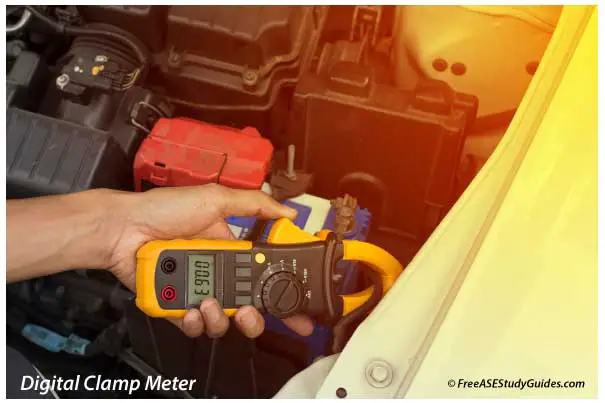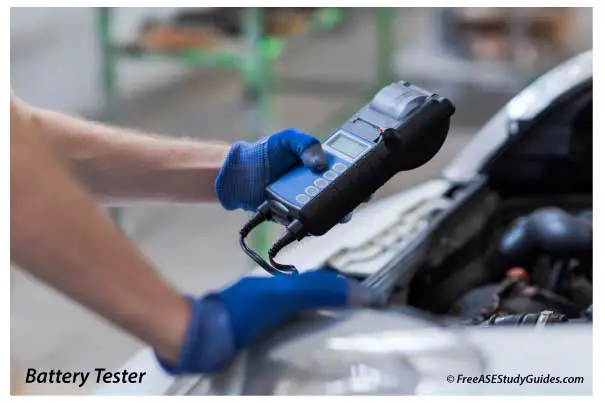Alternator: Maximum Output Testing

Clamp the amperage meter around the BAT+ wire leading from the alternator to the battery. Bring the vehicle to a fast idle of around 2000 rpm and turn on accessories like the headlights and A/C blower motor. Apply a load to the charging system to produce maximum output. An alternator is regulated and provides only the amount of amperage for current system demands. Turning on accessories or applying a load increases the system's demand for output.

The battery starts the engine. While the engine is running, the alternator provides the power to run the engine and all accessories. If there is any power left over, then it charges the battery.

Voltage/amperage testers have a load dial. Turning on accessories allows the regulator to provide maximum output.

Some of today's testers clamp onto the battery terminals and run battery and alternator ripple tests as they conveniently guide the technician through steps like turning on the headlights and increasing engine speed. They also provide a printout for future reference.

Test the alternator's regulator with a full field test when the alternator has low output. This test rules out the regulator by bypassing it and energizing the rotor with unregulated voltage.